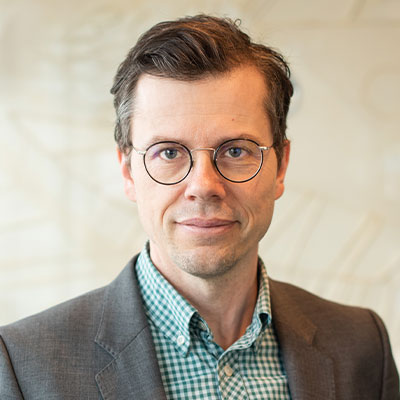What groundbreaking movements are shaping life sciences today? How do these advancements influence our society, healthcare systems, and lifestyles now and in the future? Stockholm Science City has unveiled a report delving into healthy longevity, precision medicine, and next-generation therapeutics, shedding light on key trends in the fields.
 Andreas Namslauer.
Andreas Namslauer. Here Andreas Namslauer, the author of the report, shares some of the key messages of the report.
What is the background of this report?
– Since 2017, Stockholm Science City has been convening thought leaders at the annual "Future of Life Science" symposium at Engelsberg Ironworks. These symposia, held in collaboration with The Axel and Margaret Ax:son Johnson Foundation for Public Benefit and Nordstjernan, serve as a platform for exploring the transformative potential of life science advancements. Each year, insights gleaned from these discussions are highlighted in a report, aiming to provide a roadmap for navigating the evolving landscape of life sciences and its impact on society.
What are the key themes explored in the report?
– The report elucidates three pivotal themes currently shaping the landscape of life sciences. Firstly, we examine the paradigm shift towards precision medicine, highlighting the transformative potential of novel therapies such as gene and cell therapies. By leveraging precise diagnostics, stratification of patients, and targeted treatments, this approach extends the lifespan of patients and improves patient outcomes for several conditions. However, challenges such as treatment costs and long-term efficacy remain, which are discussed in the report. Secondly, we explore the burgeoning field of geroscience, which seeks to unravel the intricacies of ageing and age-related diseases. Finally, we delve into the field of preventive healthcare measures and why healthcare systems worldwide allocate tiny parts of their budgets to prevention despite its proven benefits.
Can you share some of the key takeaways from the report?
– Amidst the complexities inherent in these themes, several key insights emerge. Precision medicine and next-generation therapeutics offer unprecedented opportunities to treat and cure diseases. With hundreds of novel drugs in clinical development and rapid technological advancements for both drug production and diagnostic methods, the transformation will undoubtedly continue, yet it necessitates concerted efforts to address cost barriers and ensure equitable access.
– Geroscience holds interesting potential for slowing ageing processes and may offer avenues for preventing age-related diseases. Within the growing pro-longevity community, the hopes are high to achieve this by extensive screening combined with lifestyle and dietary changes and broader use of drugs with indications of anti-ageing effects (at least in animal studies). Despite the growing interest from tech entrepreneurs, it is evident that pharma companies and venture capital remain cautious, awaiting robust clinical evidence and regulatory clarity.
– The report further explores the reasons behind the worldwide sparse budget allocation to preventive measures. With limited annual healthcare budgets and laws stating that patients with the most severe conditions should be prioritized, it is easy to understand why the money allocated to prevention is low. One way to overcome these issues may be to use outcome-based economic bonds and to attract private money for upfront investments in preventive actions.
– I hope this report will give some insights that spark meaningful dialogues on advancing life science for a better society.
To the report
The report Healthy Longevity, Precision Medicine, and Next-Generation Therapeutics >>
